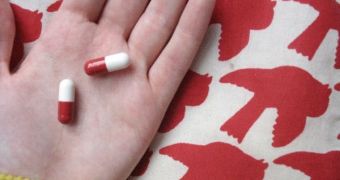In a recent investigation, it was revealed that only about half of teenagers in the United States that suffered from mental disorders were treated for their conditions. About the same number are subjected to professional counsel or aid, and the situation appears to be deteriorating, experts believe. A new work has now come to shed light on this trend. The results of a collaboration between the NIH/National Institute of Mental Health (NIMH) and the Centers for Disease Control and Prevention (CDC) National Center for Health Statistics, the National Health and Nutrition Examination Survey (NHANES) provides experts with a new tool of looking after the young generation in the country.
“Data on the prevalence of mental disorders among US youth have been varied, making it difficult to truly understand how many children and teens are affected. These data from the NHANES survey can serve as an important baseline as we follow trends of mental disorders in children,” Thomas R. Insel, MD, who is the director of NIMH, says. Details of the work were published online, ahead of print, in the December 14 issue of the respected scientific journal Pediatrics. The research was conducted between 2001 and 2004, on more than 3,042 test subjects. The participants were all aged eight to 15.
The research focused more on six common diseases: the generalized anxiety disorder (GAD), panic disorder, eating disorders (anorexia and bulimia), depression, attention deficit hyperactivity disorder (ADHD), and conduct disorder, e! Science News reports. The general results of the paper revealed that more than 13 percent of the children had suffered from at least one of these conditions within the past years, the experts report.
“With the exception of ADHD, the prevalence rates reported here are generally lower than those reported in other published findings of mental disorders in children, but they are comparable to other studies that employed similar methods and criteria,” NIMH expert Kathleen Merikangas, PhD, who has been the lead author of the Pediatrics entry, explains the results.
It was also determined that only 32 percent of those suffering from anxiety disorders sought and got professional help. This is a very small portion, the experts acknowledge, and one on which regulators will need to further concentrate. In the case of ADHD, the professional intervention rate was of about 55 percent, which is the same as that discovered in previous studies on the issue. This demonstrates an upward trend in ADHD treatments, but a lack of care for other mental disorders in children.
“Until now, there has been a dearth of reliable data on the magnitude, course and treatment patterns of mental disorders among US youth. When combined with data from other nationally representative surveys, the data will provide a valuable basis for making decisions about health care for American youth,” Merikangas concludes by saying.

 14 DAY TRIAL //
14 DAY TRIAL //